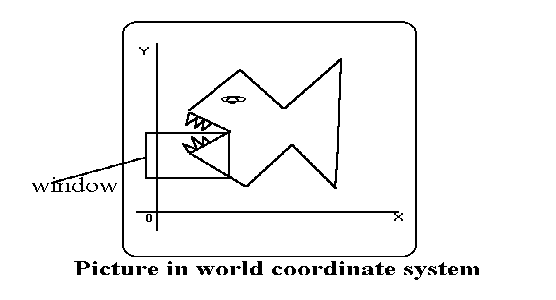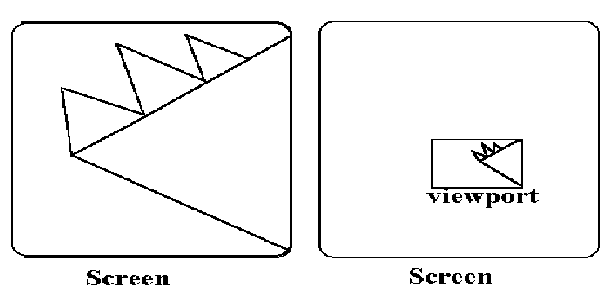All objects in the real world have size. We use a unit of measure to describe both the size of an object as well as the location of the object in the real world. For example, meters can be used to specify both size and distance. When showing an image of an object on the screen, we use a screen coordinate system that defines the location of the object in the same relative position as in the real world. After we select the screen coordinate system, we change the picture to display interior screen that means change it into screen coordinate system.
The world coordinate system is used to define the position of objects in the natural world. This system does not depend on the screen coordinate system , so the interval of number can be anything(positive, negative or decimal). Sometimes the complete picture of object in the world coordinate system is too large and complicate to clearly show on the screen, and we need to show only some part of the object. The capability that show some part of object internal a specify window is called windowing and a rectangular region in a world coordinate system is called window. Before going into clipping, you should understand the differences between a window and a viewport.
A Window is a rectangular region in the world coordinate system. This is the coordinate system used to locate an object in the natural world. The world coordinate system does not depend on a display device, so the units of measure can be positive, negative or decimal numbers.

A Viewport is the section of the screen where the images encompassed by the window on the world coordiante system will be drawn. A coordinate transformation is required to display the image, encompassed by the window, in the viewport. The viewport uses the screen coordiante system so this transformation is from the world coordinate system to the screen coordinate system.

When a window is "placed" on the world, only certain objects and parts of objects can be seen. Points and lines which are outside the window are "cut off" from view. This process of "cutting off" parts of the image of the world is called Clipping. In clipping, we examine each line to determine whether or not it is completely inside the window, completely outside the window, or crosses a window boundary. If inside the window, the line is displayed. If outside the window,the lines and points are not displayed. If a line crosses the boundary, we must determine the point of intersection and display only the part which lies inside the window.
From P. Asokarathinam -- see details 27.11.1996